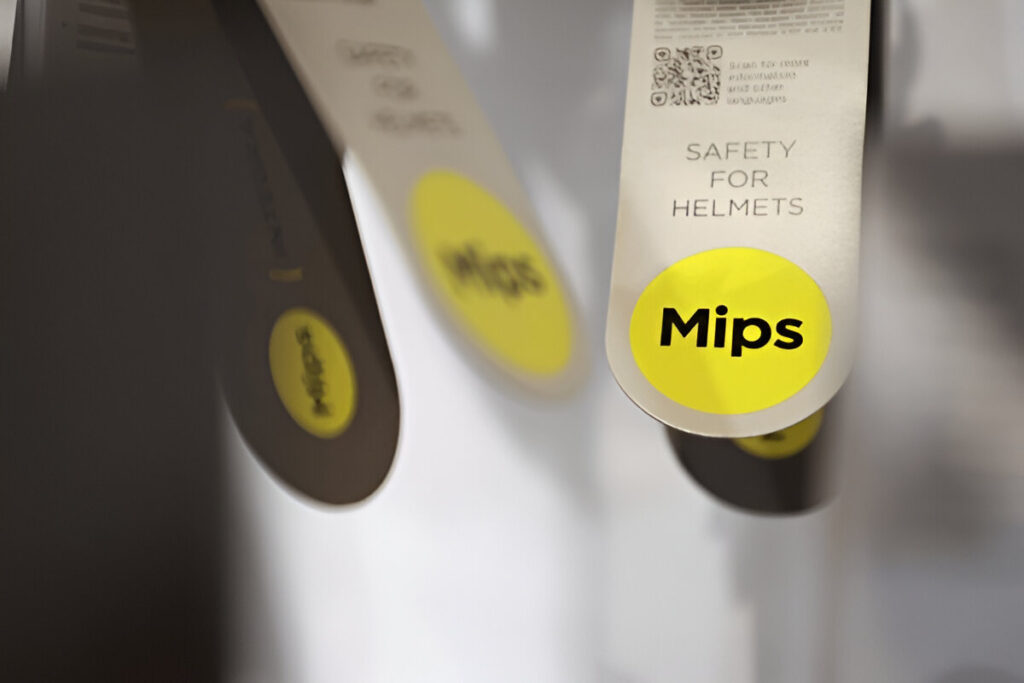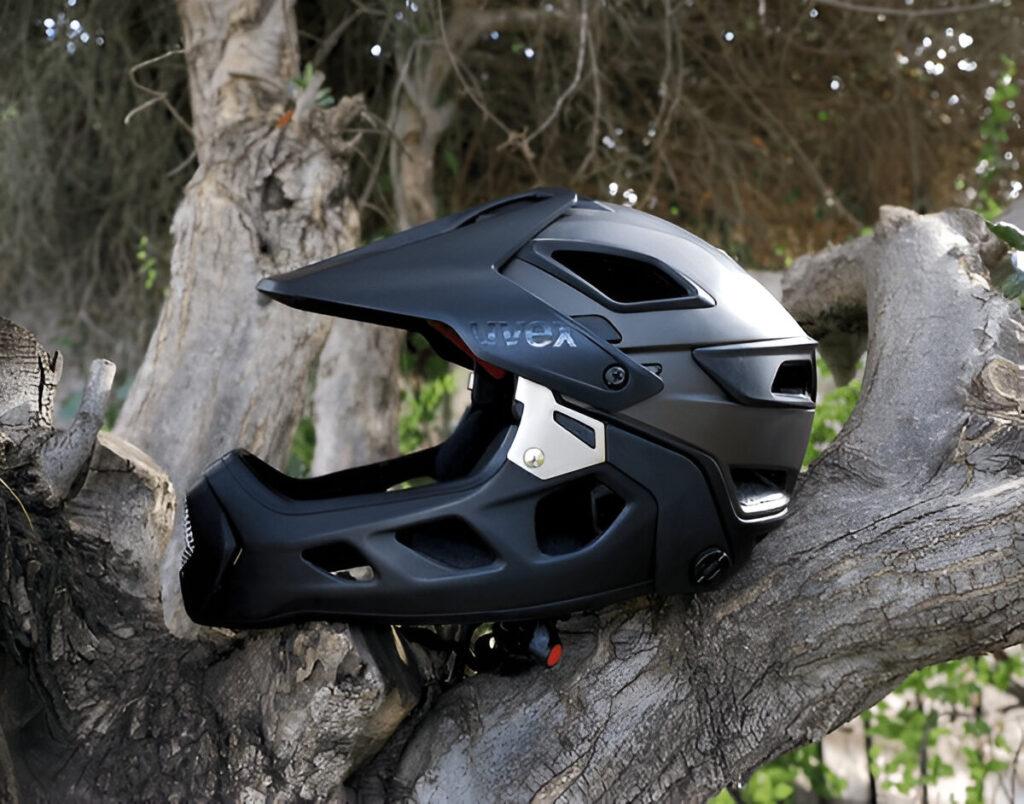
What is MIPS Technology?
MIPS, or Multi-directional Impact Protection System, is a revolutionary helmet safety technology designed to reduce rotational forces during angled impacts. Featuring a low-friction layer inside the helmet, MIPS allows the head to move slightly relative to the helmet upon impact. This innovative design minimizes rotational motion, significantly lowering the risk of brain injuries. In this article, we’ll explore how MIPS works, its benefits, and why it’s becoming a must-have feature in modern helmets.
How Does MIPS Work?
The MIPS system consists of three main components: an outer shell, an inner liner, and a sliding layer between them. During an oblique impact, the sliding layer allows the outer shell to rotate independently of the inner liner, which is in contact with the head. This mechanism helps to dissipate rotational forces that could otherwise be transferred to the brain, potentially causing concussions or other traumatic brain injuries.
Performance and Testing of MIPS Helmets
Several studies have evaluated the effectiveness of MIPS technology in various helmet types and impact scenarios:
- Snow Sport Helmets: A study comparing snow sport helmets with MIPS and WaveCel rotation-damping systems found that both systems significantly reduced rotational acceleration and concussion risk compared to standard helmets. The highest probability of concussion for standard helmets was 89%, while MIPS and WaveCel helmets showed probabilities of 67% and 7%, respectively.
- Equestrian Helmets: A study using a novel testing method found that while MIPS helmets did not significantly reduce peak rotational forces compared to traditional expanded polystyrene (EPS) helmets, they did reduce the duration of acceleration, which could indicate less neck rotation and potentially lower injury risk.
- Motorcycle Helmets: Research on modern motorcycle helmets equipped with MIPS showed a reduction in all injury metrics and brain strain compared to conventional helmets. This study highlighted the importance of assessing helmets under different impact locations and metrics to fully understand their protective performance.
- Bicycle Helmets: A quantitative analysis revealed that MIPS-equipped bicycle helmets consistently exhibited lower peak angular acceleration (PAA) and peak linear acceleration (PLA) during oblique impacts compared to non-MIPS helmets. For example, at an impact velocity of 8 m/s and a 30° inclined anvil, the MIPS helmet group showed a PAA of 3225 rad/s² and a PLA of 281 g, whereas the non-MIPS group displayed a PAA of 8243 rad/s² and a PLA of 292 g.
- Speed Skating Helmets: In speed skating, MIPS helmets demonstrated significantly lower rotational velocities compared to traditional rigid foam helmets, although linear accelerations were higher. This suggests that while MIPS effectively reduces rotational forces, further optimization may be needed for specific sports like speed skating.

Benefits of MIPS Helmets
- Reduction of Rotational Forces
MIPS helmets are designed to reduce rotational forces during oblique impacts using a low-friction layer that allows the outer shell to slide relative to the head. Studies show MIPS reduces peak angular acceleration (PAA) by 38.2% and peak angular velocity (PAV) by 33.2%, significantly lowering brain injury risks. - Enhanced Protection Across Impacts
Tested under various conditions, MIPS helmets consistently outperform traditional designs in reducing rotational motion. For example, Y-axis impacts saw PAA reductions of 47.4% and PAV reductions of 38.1%, with finite element models confirming superior injury mitigation. - Real-World Safety Performance
Realistic tests, including equestrian and motorcycle scenarios, confirm MIPS helmets reduce brain strain and injury metrics. This highlights their effectiveness in mitigating head injuries during everyday use. - Versatility Across Sports
MIPS technology is widely used in helmets for cycling, skiing, snowboarding, and more. In snowsport helmets, MIPS significantly reduces rotational acceleration and concussion risk, offering protection across multiple disciplines. - Proven Performance Metrics
Oblique impact tests show MIPS helmets reduce peak angular acceleration to 3225 rad/s² compared to 8243 rad/s² in non-MIPS models, demonstrating superior force reduction and safety. - Long-Term Health Benefits
By minimizing the risk of concussions and brain injuries, MIPS helmets protect long-term cognitive health, ensuring users can engage in sports and activities with confidence and reduced injury risk.
Comparing MIPS Helmets to Traditional Helmet Designs
1. Safety Features
Traditional helmets, typically made from rigid EPS foam, focus on absorbing linear impacts to prevent skull fractures. However, they lack protection against rotational forces, a leading cause of traumatic brain injuries (TBIs). Advanced designs with technologies like MIPS incorporate a low-friction layer that allows the helmet to slide slightly upon impact, reducing rotational motion and minimizing brain injury risk.
2. Energy Absorption Mechanisms
Standard helmets rely on foam compression to dissipate impact energy, which works well for direct impacts but doesn’t address rotational forces. Helmets with MIPS technology include a slip-plane system that reduces rotational acceleration during angled impacts, managing both linear and rotational forces for comprehensive protection.
3. Comparative Studies
Research highlights the superior performance of MIPS-equipped helmets in reducing rotational forces. Studies show up to a 73% decrease in rotational acceleration compared to traditional designs. For example, during oblique impacts, helmets with MIPS exhibited significantly lower angular and linear acceleration metrics, reducing brain injury risk.
4. Real-World Performance
MIPS technology is widely used in helmets for cycling, skiing, and equestrian sports. For instance, equestrian tests suggest MIPS reduces impact acceleration duration, potentially lowering neck rotation and injury risks. In cycling, MIPS helmets significantly lower the likelihood of AIS brain injuries in real-world conditions.

Applications of MIPS Technology
- 1. Environmental Monitoring
MIPS-based sensors excel at detecting pollutants and hazardous substances with high sensitivity and selectivity. For instance, they have been used to identify caffeine in wastewater, showcasing their potential in monitoring environmental contaminants. - 2. Biomedical Applications
In healthcare, MIPS enable the detection of biomolecules such as proteins and infectious agents, proving valuable for diagnostics. They are also being explored for drug delivery systems, offering controlled and targeted release of medications. - 3. Food Safety
MIPS technology ensures food safety by detecting pathogens, pesticides, and antibiotics in food products. This enhances quality control and compliance with safety standards. - 4. Chemical and Pharmaceutical Analysis
MIPS enhance solid-phase extraction (SPE) processes, isolating and concentrating target compounds for precise analysis. Their reliability makes them indispensable in drug development and quality control. - 5. Industrial Applications
MIPS improve industrial processes by detecting and removing impurities in real-time, boosting efficiency and precision. They are particularly valuable in semiconductor and pharmaceutical manufacturing. - 6. Sensor Development
MIPS are integral to advanced sensors, enabling accurate detection of a wide range of analytes, from small molecules to cells. These sensors support environmental, biomedical, and industrial applications. - 7. Future Trends
Research is expanding MIPS capabilities, such as integrating them with surface-enhanced Raman spectroscopy (SERS) for better sensitivity. Real-time monitoring applications in environmental and biomedical fields promise even greater advancements.
Application Cases
| Product/Project | Technical Outcomes | Application Scenarios |
|---|---|---|
| Cyber-Physical Production System | Enhanced energy efficiency by 18.37% to 78.83%, real-time monitoring, and reduced carbon footprint. | Manufacturing environments for real-time monitoring and defect detection. |
| Micro Isotope Power Sources | Long life, high reliability, high specific power, and low radiation leakage. | Space and terrestrial applications, including NASA missions and military uses. |
| Plasmonic Sensors | High selectivity, sensitivity, and low-cost detection of analytes. | Environmental monitoring, pharmaceutical analysis, medical diagnosis, and food quality assessment. |
| Universal Micromachining Platform | Fast and flexible manufacturing, laser micro cutting, and 3D printing capabilities. | Development of Micro Physiological Systems (MPS) for replacing animal testing. |
| Molecularly Imprinted Polymers (MIPs) | High affinity and selectivity for target molecules, robustness, and ease of preparation. | Solid-phase extractions, sensors, enantiomer separations, drug discovery, and catalysis. |
Latest Technical Innovations in MIPS Helmets
Innovative Safety Features
- Advanced Impact Protection
The Multi-Directional Impact Protection System (MIPS) reduces rotational forces during impacts by incorporating a low-friction layer that allows slight movement between the helmet and head. Dual-density EPS foam liners, such as those in the GIRO AETHER, improve energy absorption across various impact forces, enhancing overall safety. - Enhanced Testing Methods
New testing methods simulate realistic impact scenarios, like falls from elevated tracks, to measure rotational velocity and acceleration. These advancements show reduced impact duration, potentially lowering neck and brain injury risks.
Materials Driving Innovation
- Optimized EPS Foam
Expanded Polystyrene (EPS) remains the core material for energy absorption. Innovations in density and structure, combined with low-friction layers, improve both linear and rotational impact protection. - Polycarbonate Shells
Lightweight and durable polycarbonate shells, as seen in designs like the GIRO AETHER, enhance structural integrity while maintaining a sleek aesthetic. - Advanced Composites
Composite materials further boost impact resistance and reduce helmet weight, complementing traditional EPS for a robust protective system.
Design Features Enhancing Protection
- Layered Construction
Modern helmets use layered designs, integrating safety technologies like spherical MIPS directly into the EPS foam for added protection without sacrificing comfort. - Improved Ventilation
Deeper channels and larger vents reduce internal temperatures, ensuring comfort during extended use. Models like the GIRO AETHER offer up to a 2°F cooling improvement. - Adjustable Fit Systems
Adjustable systems, such as the Roc Loc 5+ Air, provide secure, customizable fits with vertical and horizontal adjustments, ensuring proper helmet positioning during impacts.
These advancements showcase the cutting-edge technology behind modern helmets, delivering enhanced safety, comfort, and performance.
To get detailed scientific explanations of MIPS Helmets, try Patsnap Eureka.

